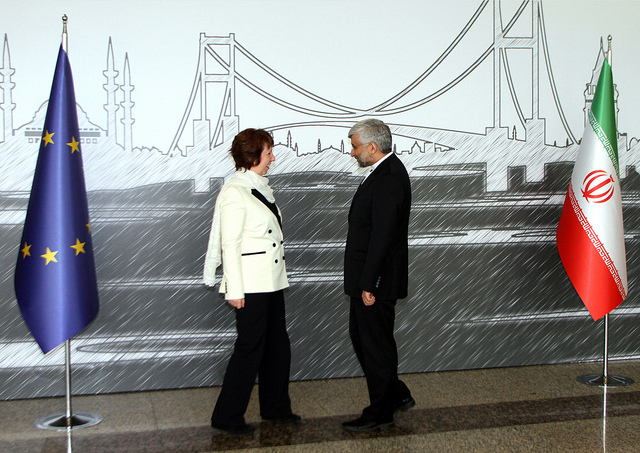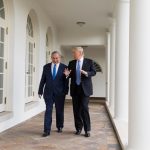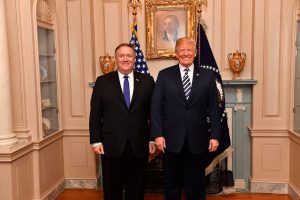via IPS News
Although the place and time of the next round of talks on Iran’s nuclear programme have not yet been announced, the manoeuvring by Iran and the United States to influence the outcome has already begun.
Iran sought support for a revised proposal to the talks during the United Nations General Assembly (UNGA) last month, according to a New York Times report Oct. 4. Then, only a few days later, the Barack Obama administration launched a preemptive attack on the proposal through New York Times reporter David Sanger.
The officials suggested the Iranian proposal would give Iran an easier route to a “breakout” to weapons grade uranium enrichment. But that claim flies in the face of some obvious realities.
Obama administration officials complained that, under the Iranian plan, Iran would carry out a “suspension” of 20-percent enrichment only after oil sanctions have been lifted and oil revenues are flowing again.
That description of the proposal is consistent with an Iranian “five-step plan”, presented during the talks with P5+1, the text of which was published by Arms Control Today last summer. In that proposal, the P5+1 would have ended all sanctions against Iran in steps one and two, but Iran would have ended its 20-percent enrichment only in the fifth step.
In that same final step, however, Iran also would have closed down the Fordow enrichment plant and transferred its entire stockpile of 20-percent enriched uranium to “a third country under IAEA (International Atomic Energy Agency) custody”.
Iran has made clear that it intends to use the 20-percent enrichment as bargaining leverage to achieve an end to the most damaging economic sanctions.
Ambassador Seyed Hossein Mousavian, the spokesperson for Iran’s nuclear negotiating team from 2003 to 2005 and now a visiting scholar at Princeton University, told IPS, “Iran is prepared to stop 20-percent enrichment and go below five percent. The question is what will the P5+1 provide in return. As long as the end state of a comprehensive agreement is not clear for Iran, it will not consider halting enrichment at 20 percent.”
But the administration’s portrayal of the Iranian proposal as offering a sanctions-free path to continued 20-percent enrichment is highly misleading, according to close observers of the Iran nuclear issue. It also ignores elements of the proposal that would minimise the risk of a “breakout” to enrichment of uranium to weapons grade levels.
The Obama administration criticism of the proposal, as reported by Sanger, was couched in such a way as to justify the U.S. refusal to discuss lifting the sanctions on Iranian oil exports during the four rounds of talks with Iran. A senior administration official was quoted as saying that Iran “could restart the program in a nanosecond,” whereas “it would take years” to re-impose the sanctions.
Paul Pillar, national intelligence officer for Near East and South Asia from 2000 to 2005, noted in a commentary in The National Interest that it is “far easier to impose sanctions on Iran than to lift them” and that if Iran reneged on a nuclear agreement, “it would be easier still.”
Peter Jenkins, British permanent representative to the IAEA from 2001 to 2006, noted in an e-mail to IPS that it took the EU only two months to agree to impose oil sanctions, and that “political resistance among the 27 (EU member states) to imposing oil sanctions would probably be less if re-imposition were required by an Iranian breach of a deal with the P5+1.”
Jenkins pointed out that EU oil purchases from Iran now have experience in getting supplies from other countries which could make re-imposing sanctions even easier.
One U.S. official was quoted by Sanger as complaining that the Iranian proposal would allow Iran to “move the fuel around, and it stays in the country”. That description appeared to hint that the purpose is to give Tehran the option of a breakout to weapons grade enrichment.
But the biggest difference between the proposal now being discussed by Iranian diplomats and the one offered last summer is that the new proposal reflects the reality that Iran began last spring to convert 20-percent enriched uranium into U308 in powdered form for fuel plates for its Tehran Research Reactor.
The conversion of 20 percent enriched uranium to U308, which was documented but not highlighted in the Aug. 30 IAEA report, makes it more difficult to use that same uranium for enrichment to weapons grade levels.
The new Iranian proposal evidently envisions U308 uranium remaining in the country for use by the Tehran Research Reactor rather than the entire stockpile of 20-percent enriched uranium being shipped to another country as in its previous proposal.
Former State Department official Mark Fitzpatrick of the International Institute of Strategic Studies, who has argued in the past that the only purpose Iran could have in enriching to 20 percent is a nuclear weapon, told the Times that the conversion “tends to confirm that there is civilian purpose in enriching to this level”.
But Fitzpatrick told the Times that the Iranians know how to reconvert the U308 powder back to a gaseous form that can then be used for weapons grade enrichment. “It would not take long to set it up,” Fitzpatrick said.
In an interview with IPS, Dr. Harold A. Feiveson, a senior research scientist at Princeton’s Woodrow Wilson’s school and a specialist on nuclear weapons, said “it would not be super hard” to carry out such a reconversion.
But Feiveson admitted that he is not aware of anyone ever having done it. The reconversion to 20 percent enrichment “would be pretty visible” and “would take some time,” said Feiveson. “You would have to kick the (IAEA) inspectors out.”
Even Israeli policymakers have acknowledged that Iran’s diversion of 20-percent enriched uranium represents a step away from a breakout capability, as Haaretz reported Oct. 9.
Defence ministry sources told the Israeli daily that the Iran’s reduction of its stockpile of medium-enriched uranium had added “eight months at least” to what the Israeli government has cited as its “deadline” on Iran. The same sources said it was the justification for Prime Minister Benjamin Netanyahu’s dropping the threat of attack on Iran in his U.N. speech.
The deep reduction in Iranian oil revenues from sanctions and the recent plunge in the value of Iran’s currency may well have made Iran more interested in compromise than when the talks with the P5+1 started in April.
Mousavian told IPS, “I am convinced that Iran is ready for a package deal based on recognition of two principles.” The first principle, he said, is that “Iran recognises the P5+1 concerns and will remove all such concerns”; the second is that the P5+1 “recognises the rights of Iran and gradually lifts sanctions”.
But Iran’s supreme leader Ayatollah Ali Khamenei has expressed serious doubts about whether the Obama administration is willing to end the sanctions on Iran under any circumstances. In an Oct. 10 speech, Khamenei said the Americans “lie” in suggesting sanctions would be lifted in return for Iran giving up its nuclear program.
U.S. officials “make decisions out of grudge and aversion (toward Iran)”, Khamenei said.






Well N. Korea has few opportunities to earn money or food so I think they do these thngis as a bargaining chip. They also don’t like it when they are ignored and I’m sure they feel Obama hasn’t given them the attention they want. Trouble is, they share their technology with other regimes but there is nothing to be done short of quickly nuking the entire country.I think N. Korea is already sharing technology with Iran.